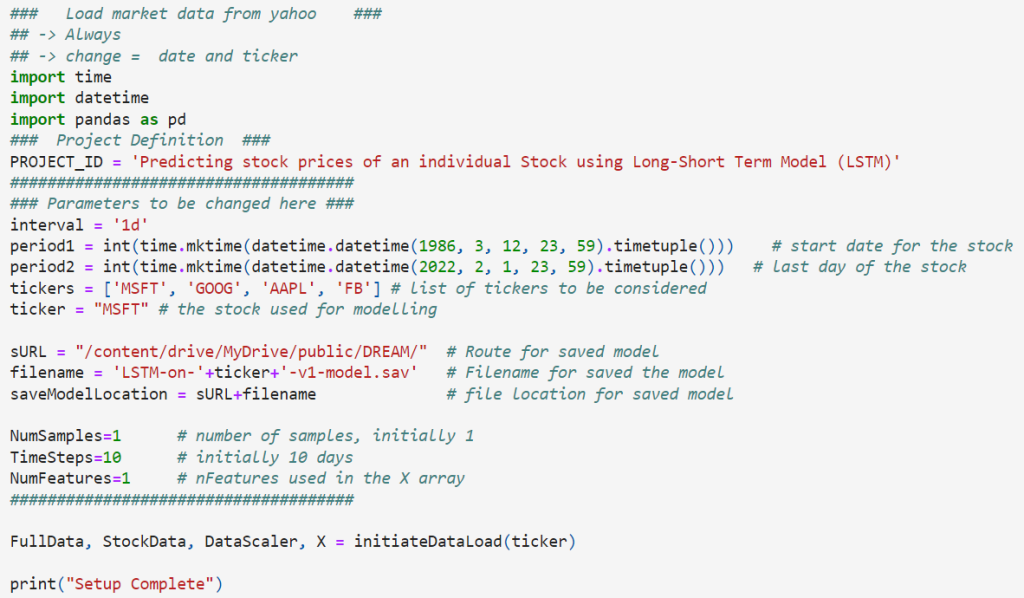This code is the result of some work I have done on LSTM.
Purpose: predict the next day price with the use of a LSTM neural network and just one property.
How:
- I have normalized the data,
- I have used just 1 parameter as input (close price),
- I have built the code using basic functions to module the basis.
Code sections
I have divided the code in Jupyter sections, so it’s easy to run.
- 1.- Load libraries common data and functions
- 2.- Preparing the data for LSTM
- 3.- Split Train/Test dataset & dimension the data vectors
- 4.- Creating the LSTM model
- 5.- Build prediction on test dataset
- 6.- Predict the stock price for tomorrow
- 10.- Analysis: Generate and save data to analyze results
- 20.- Generate Next day result
The training of the code takes between 45-60 minutes on Google Collab, so I save the model and I use it to predict the following days for testing purposes (it takes 5 minutes).
Once you have generated the models, to predict the following day you just have to run section #1 and section #6.
The configuration I have used is this one:

Results
Despite the accuracy is over 98%, the results are very poor. The True Positives and True Negatives ratio is low (61.97%) and that makes the manual back-test I did very poor.

To calculate the results, I do it in 2 steps. First, I extract the data (predictions and real data) into a CSV executing the section “10.- Analysis: Generate and save data to analyze results”. Then I run another Jupyter notebook that enables me to calculate the results.
In this case on Microsoft the table is:

Next step?
My next step is to turn this code from a single parameter to a multiple parameters, and see how it works.
The code
You can find the code here:
- Generate the LSTM and its results: https://github.com/joapen/ML-Learning-bucket/blob/main/LSTM_on_1_Stock_v1.ipynb
- Test the accuracy of the results: https://github.com/joapen/ML-Learning-bucket/blob/main/Check_Results_v1.ipynb